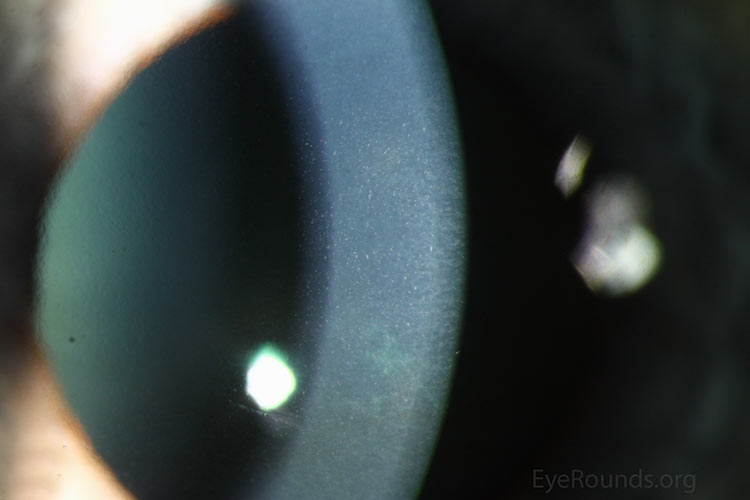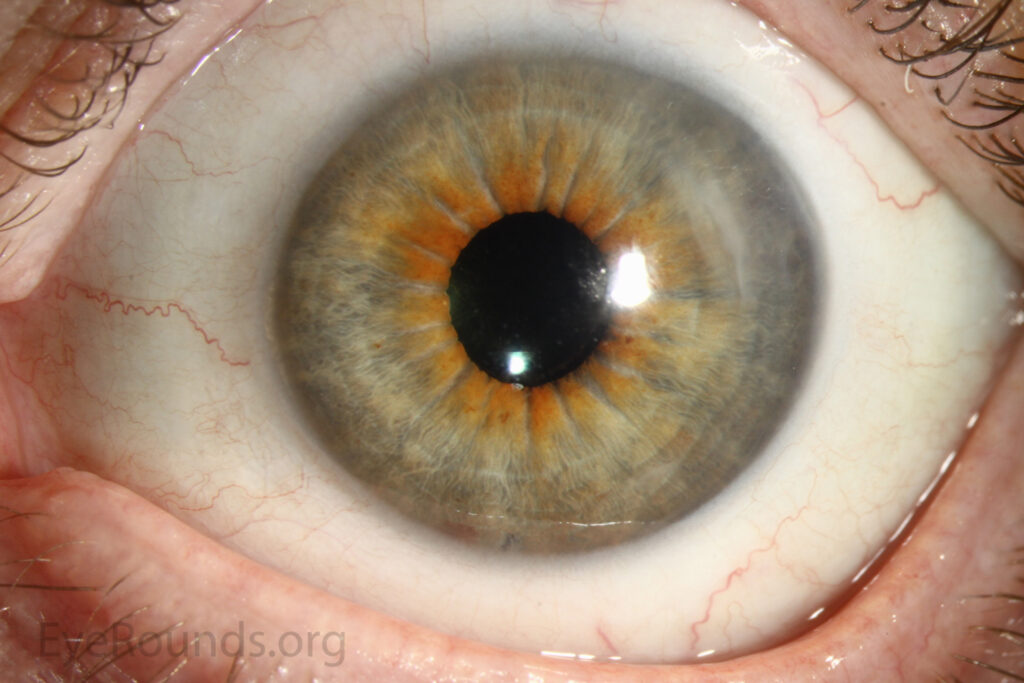Fuchs dystrophy, also known as Fuchs endothelial corneal dystrophy, is a progressive eye condition that primarily affects the cornea, leading to vision impairment. This condition is characterized by the gradual deterioration of the innermost layer of the cornea, known as the endothelium. Understanding this disease is crucial for early detection and effective management. In this article, we will explore the causes, symptoms, diagnosis methods, and treatment options available for individuals affected by this condition.

What is Fuchs Dystrophy?
Fuchs dystrophy is a rare genetic disorder that affects the cornea, which is the clear, dome-shaped surface covering the front of the eye. The cornea plays a vital role in focusing vision, and any damage to its structure can lead to significant visual disturbances. In this condition, the cells in the innermost layer of the cornea begin to die off, causing fluid buildup and swelling. Over time, this leads to clouding of the cornea and impaired vision.
Understanding the Cornea’s Role
- The cornea consists of five layers, each with a specific function.
- The endothelium is responsible for maintaining the proper amount of fluid in the cornea, ensuring it remains clear.
- When the endothelial cells are damaged or lost, the cornea cannot regulate fluid effectively, leading to swelling and vision problems.
Causes of Fuchs Dystrophy
The exact cause of Fuchs dystrophy is not fully understood, but research suggests that both genetic and environmental factors may play a role in its development. Here, we delve into the primary causes associated with this condition.
Genetic Factors
Fuchs dystrophy often runs in families, indicating a strong genetic component. Mutations in certain genes have been linked to the development of this condition. These mutations affect the production and function of endothelial cells, making them more susceptible to damage over time. While not everyone with a family history of the condition will develop it, having a close relative with the disease increases the risk significantly.
Age-Related Changes
As people age, the natural wear and tear on the body can lead to the gradual decline of endothelial cells. This age-related deterioration is one of the most common causes of Fuchs dystrophy, particularly in individuals over the age of 50. The endothelial cells lose their ability to pump out excess fluid, resulting in corneal swelling and vision issues.
Environmental Triggers
Certain environmental factors, such as prolonged exposure to ultraviolet light, smoking, and poor nutrition, may exacerbate the progression of Fuchs dystrophy. These factors can accelerate cell damage and contribute to the worsening of symptoms. Protecting the eyes from harmful environmental influences is essential for slowing the progression of the disease.
Symptoms of Fuchs Dystrophy
The symptoms of Fuchs dystrophy typically develop slowly and worsen over time. Early detection of these symptoms is crucial for timely intervention and management. Below are the most common signs associated with this condition.
Blurred Vision
One of the earliest and most noticeable symptoms of Fuchs dystrophy is blurred vision, especially upon waking in the morning. This occurs because fluid accumulates in the cornea overnight when the eyes are closed, causing temporary swelling. As the day progresses and the eyes remain open, the cornea may dry out slightly, improving vision temporarily.
Sensitivity to Light
Individuals with Fuchs dystrophy often experience increased sensitivity to light, also known as photophobia. This symptom can make it difficult to perform daily activities, particularly in bright environments or under direct sunlight. Wearing sunglasses or using anti-glare coatings on glasses may help alleviate discomfort.
Eye Pain or Discomfort
As the condition progresses, some individuals may experience eye pain or discomfort due to the swelling of the cornea. This can feel like a gritty sensation or a constant ache in the affected eye. In severe cases, the pain may interfere with sleep and daily routines.
Cloudy or Hazy Vision
Advanced stages of Fuchs dystrophy can lead to persistent cloudiness or haziness in vision. This occurs when the cornea becomes permanently swollen and loses its transparency. At this stage, corrective lenses may no longer be sufficient to improve vision, and surgical intervention may be necessary.
Diagnosis of Fuchs Dystrophy
Diagnosing Fuchs dystrophy requires a comprehensive eye examination conducted by an ophthalmologist. Several diagnostic tools and techniques are used to assess the health of the cornea and identify the presence of the condition.
Slit-Lamp Examination
A slit-lamp examination is a standard diagnostic procedure used to evaluate the structures of the eye, including the cornea. During this test, a specialized microscope with a bright light is used to examine the cornea in detail. The ophthalmologist looks for characteristic changes in the endothelial cells, such as guttae, which are small bumps on the back surface of the cornea.
Corneal Thickness Measurement
Measuring the thickness of the cornea, also known as pachymetry, is another important diagnostic tool. In Fuchs dystrophy, the cornea tends to thicken due to fluid retention. Pachymetry helps determine the extent of corneal swelling and provides valuable information about the severity of the condition.
Endothelial Cell Count
An endothelial cell count involves using a special microscope to count the number of endothelial cells in the cornea. A lower-than-normal cell count indicates damage to the endothelium, which is a hallmark of Fuchs dystrophy. This test helps confirm the diagnosis and monitor the progression of the disease over time.
Treatment Options for Fuchs Dystrophy
While there is currently no cure for Fuchs dystrophy, several treatment options are available to manage symptoms and slow the progression of the disease. The choice of treatment depends on the severity of the condition and the individual’s specific needs.
Non-Surgical Treatments
In the early stages of Fuchs dystrophy, non-surgical treatments may be sufficient to alleviate symptoms and improve quality of life. These include:
- Hypertonic Saline Eye Drops: These drops help reduce corneal swelling by drawing excess fluid out of the cornea. They are typically used in the morning to address morning blurriness.
- Soft Contact Lenses: Specialized contact lenses can provide a protective barrier over the cornea, reducing discomfort and improving vision.
- Anti-Glare Glasses: Glasses with anti-glare coatings can help reduce sensitivity to light and improve visual clarity.
Surgical Treatments
For individuals with advanced Fuchs dystrophy, surgical intervention may be necessary to restore vision and prevent further damage. The most common surgical procedures include:
- Endothelial Keratoplasty: This minimally invasive procedure involves replacing the damaged endothelial layer of the cornea with healthy donor tissue. It has a high success rate and faster recovery compared to traditional corneal transplants.
- Penetrating Keratoplasty: In severe cases, a full-thickness corneal transplant may be required. This procedure replaces the entire cornea with donor tissue and is typically reserved for individuals with extensive corneal damage.
Lifestyle Modifications
In addition to medical and surgical treatments, making certain lifestyle changes can help manage Fuchs dystrophy effectively. These include:
- Avoiding prolonged exposure to sunlight and wearing UV-protective sunglasses.
- Quitting smoking to reduce oxidative stress on the eyes.
- Maintaining a balanced diet rich in antioxidants to support overall eye health.
Living with Fuchs Dystrophy
Managing Fuchs dystrophy requires a proactive approach and regular follow-ups with an eye care professional. By staying informed about the condition and adhering to prescribed treatments, individuals can maintain their quality of life and minimize the impact of the disease on their daily activities.





